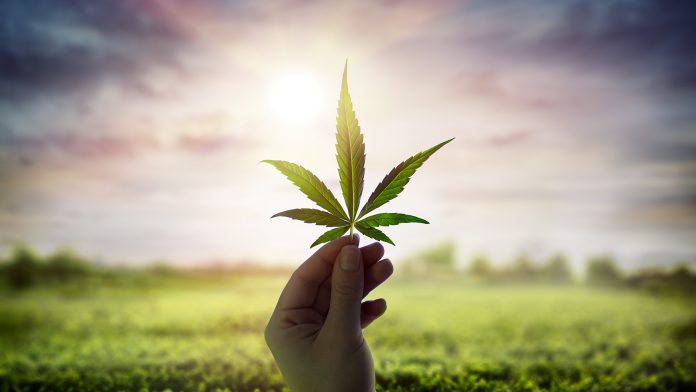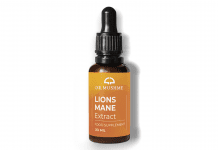
Dr Leigh Vinocur, Chief Medical Officer of cannabis consulting company Ananda Medical Practice and member of the Society of Cannabis Clinicians, discusses the state of cannabis research, treatment, and legalisation in the US.
The Society of Cannabis Clinicians was founded in 1999 and aims to support medical cannabis research and education for both patients and clinicians. As well as helping to facilitate and encourage best practices within clinical care through its evidence-led approach, the Society also offers a Clinical Training Curriculum to enhance physicians’ understanding of cannabis-based treatments, the endocannabinoid system as well as laboratory testing and quality control in the cannabis industry. Health Europa spoke to Chief Medical Officer of Ananda Medical Practice, medical cannabis expert and one of the Society’s members, Dr Leigh Vinocur, about the state of cannabis research, accessibility, and legalisation in the US.
What conditions is medical cannabis most commonly used for?
There are studies suggesting 65% of patients who approach their physicians about medical cannabis, and 65% of those already using it, have chronic pain. That is probably the main reason that patients seek it out, particularly older adults. We also see patients who have chronic conditions like multiple sclerosis and spasticity as well as those suffering with nausea as a result of chemotherapy who use medical cannabis to help alleviate their symptoms.
The opioid crisis in the US has shown that people now want to take their health into their own hands. Unwittingly, physicians like myself in the US had been told that short-term use of opioids are not addictive, and that is not completely true. What we are seeing today with prescription pain relievers is that sometimes they are not even helping the patients and then these patients are ending up with addictions and exacerbated health problems. People are tired of Big Pharma in this country and so this wave of medical cannabis legalisation is an indication that people are trying to take greater control over their health.
How does the current US system, where cannabis is illegal under federal law but wholly or partly decriminalised in a growing number of states, complicate its medical use? Would a more standardised regulatory approach help patients and clinicians?
In the US, states have a certain amount of sovereignty and rights which in some ways is built into our constitution. Many states therefore started with the decriminalisation of cannabis and eventually, legalisation for medical use. Colorado and Washington were the first states to legalise adult recreational use, but the problem with the federal illegality today, from the standpoint of medical cannabis and clinicians like myself, is that it creates a barrier for clinical research. Furthermore, at one point there was only one place in the US where you could get cannabis and once this legalisation started, there was diversification in the types of cannabis being produced and therefore the research we have is based on cannabis that patients do not have access to.
Many physicians in the US are no longer in private practice. The majority of them are either employed by health systems or universities, all of which have federal grants and funding for residency programmes and training. The legal issues surrounding medical cannabis mean many of these institutions are afraid of losing funding and therefore forbid their physicians from even recommending or using cannabis in their practice. Not only is this limiting clinical research and confusing clinicians, but it is harmful for the patients too.
The best research today is taking place in Israel and Europe, but a lot of it is still preclinical. In my practice, I have turned away cancer patients who want to forego all their treatment and just use cannabis, but I must refuse them and work with their oncologist to manage their symptoms because we just do not have that clinical evidence available yet.
The fact that cannabis is federally illegal yet legal in some states for medical purposes, really puts doctors and patients in a sense of limbo. There are some states like Colorado that started research initiatives themselves for funding and hopefully in the next few years the huge tax revenue generated from the legalisation of cannabis for adult use could be funnelled into medical cannabis research. Likewise, there are some companies that are appointing medical directors to start undertaking their own research and clinical trials in the future.
The Society offers a number of courses for clinicians. What benefits do these programmes offer clinicians and their patients? Why is cannabinoid education particularly important?
These programmes are very important and helpful. I have taken many because there is a huge knowledge gap in the US in terms of cannabinoid education. According to the American Association of Medical Colleges, only 9% of medical schools teach their students about medical cannabis and this is yet another reason why physicians are reluctant to recommend it. I get a lot of referrals from physicians who tell me that they are not against medical cannabis, but their universities or health systems do not allow it and therefore, they feel very uncomfortable discussing it as a treatment option with their patients.

Aside from taking those courses offered by the Society of Cannabis Clinicians, I attended the University of Maryland School of Pharmacy, which is the first school in the country to offer a two-year master’s programme in Medical Cannabis Science and Therapeutics. I am one of the first graduates of this programme and wanted to use the knowledge I had gained during the course, as well as what I had learnt from shadowing other medical cannabis pioneers like Dr Bonni Goldstein, to help bridge the knowledge gap and educate other clinicians and healthcare providers.
How do you anticipate the cannabis industry evolving in the US over the next few years?
There has always been this big push to get cannabis legalised or de-scheduled. Interestingly, cannabis was used as early as the 1800s by large companies like Eli Lilly who made cannabis tinctures. The US Pharmacopeia which creates national standards today for all prescription and over the counter drugs after congress enacted the Federal Food and Drug Act in 1906 and cannabis was on their formulary because, at the time, doctors were using it. The subsequent Marihuana Tax Act of 1937, which was seen predominantly as a political move, heavily regulated the importation, cultivation, and distribution of cannabis, even though at the time many companies were benefitting from it as a commercial product and doctors and pharmacies were using it for therapeutic purposes. The only group that came to Congress to testify against the tax was the head of the American Medical Association who argued that cannabis was beneficial in treating a range of conditions.
In the 19th century, nobody knew what was in cannabis, we know now there are 100 different cannabinoids and 500 chemicals, but it was not until 1964 that Raphael Mechoulam identified THC. Eventually, as other medications such as aspirin with pills that had precise dosing and standardisation entered the market, the use of cannabis fell out of favour, and the US Pharmacopoeia took it off its formulary for standardisation. In the 1970s, President Nixon created the Shafer Commission to look at the dangers of cannabis and though they concluded it was not as harmful as initially thought, cannabis was categorised as a Schedule 1 controlled substance under the Controlled Substances Act. As a result, cannabis was deemed to have no medical use and a high addictive potential on par with other drugs like LSD and different psychedelics.
The majority of US states have now legalised medical cannabis, with several legalising it for recreational use, and these companies are making millions from it. In the future, there are likely to be attempts to de-schedule cannabis at a federal level as well as more states legalising it for recreational adult use. I hope that through the tax revenues that states receive, they apply some social justice restoration because, over the years, besides the politicisation of cannabis use, it has disproportionately hurt our poorest communities.
From a medical standpoint, there will always be a need for medical cannabis and if we consider other addictions like nicotine and alcohol, recreational use of cannabis is not on the same level, nor does it cause as many health problems. The challenge now is to provide patients and physicians with clear guidance through research and clinical trials. By legalising cannabis at a federal level, we will be able to facilitate these trials and have medications that are more standardised, safer, and precise. At present, the federal illegality means standards and testing are inconsistent and regionalised, we need a cohesive model so that all physicians feel informed and those patients who are most in need can benefit from cannabis-based treatments.
Leigh Vinocur, MD, MS, FACEP Chief Medical Officer, Medical Cannabis Expert and
Advisor, Nationally Recognised On-Air Medical Expert and Contributor
Chief Medical Officer of Ananda Medical Practice
Member of the Society of Cannabis Clinicians
www.cannabisclinicians.org
https://twitter.com/doctor_leigh
This article is from issue 19 of Health Europa Quarterly. Click here to get your free subscription today.


















